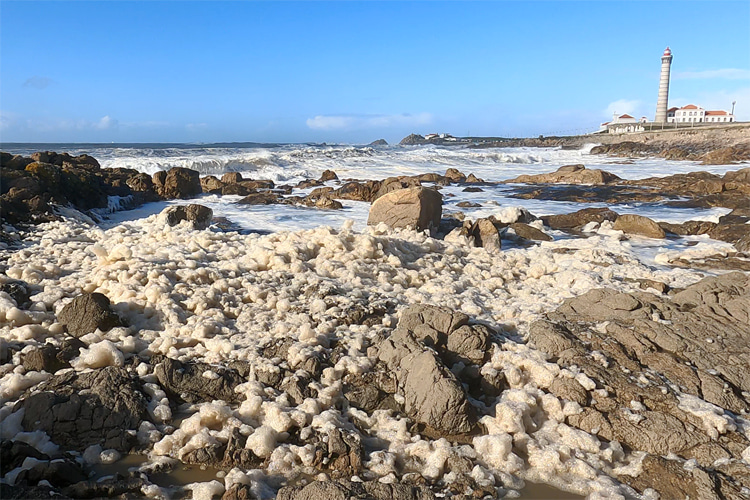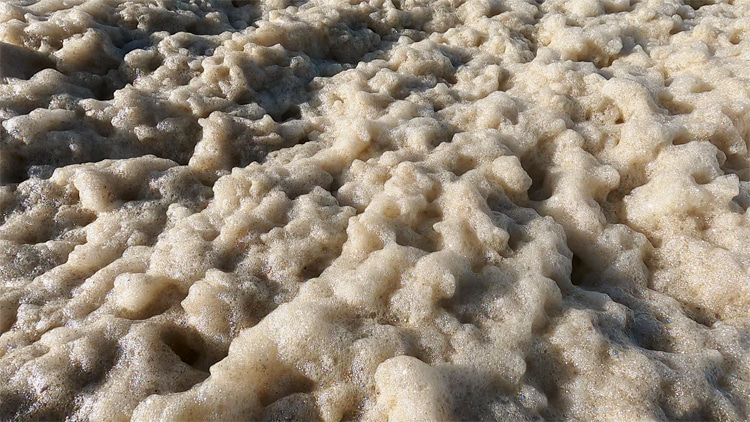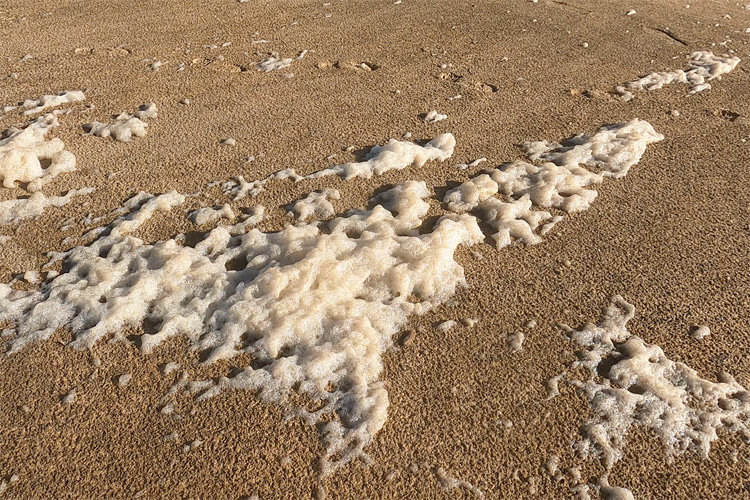Have you ever wondered how sea foam forms and why it appears near the shore or at the beach?
Foam is made of tiny pockets of air surrounded by water. These bubbles typically burst quickly and disappear a few seconds after being created.
So, when we spot foam that lasts longer, that's a sign that there is something else in the water.
The oceans are full of seaweed, kelp, algae, corals, seagrass, phytoplankton, and animals.
When marine life dies, organic matter breaks down, and a substantial amount of particulate organic carbon is released into the ocean.
Dissolved organic matter (DOM) acts as a surfactant, or foaming agent, which, combined with the pounding of ocean waves, results in large buildups of foam in the water and at the beach.
It is a similar process to when you add soap to water and agitate it - bubbles start to form, eventually growing into larger masses of foam.

A Mechanical and Chemical Phenomenon
The combination of agitated seas and decomposed organic matter often leads to the creation of large buildups of ocean foam.
These white or beige bubbles stick to each other and grow in size thanks to a process called surface tension - organic matter helps reduce the surface tension of water and contributes to the stabilization of bubbles.
In other words, surfactants make the bubbles last much longer.
The creation of large sea foam-infested areas near the shore often coincides with high surf, stormy weather, and winter.
In fact, the more turbulent and violent the waves, the more spume will be created.
So, sea foam is a mechanical and chemical phenomenon that results from the combination of two relevant factors - powerful swells or storms and the presence of high concentrations of organic matter in sea water.
Whenever high onshore winds take over, sea foam is often blown from the shoreline or beach into terra firma.
Interestingly, the creation of sea foam is similar to the formation of sea spray - both result from the breaking of the waves.
However, sea spray does not rely on the presence of organic matter to form. These aerosol particles are bursting bubbles created mostly by regular breaking waves and plunging waves.
In most cases, sea foam is a mixture of DOM, which includes phytoplankton, zooplankton, bacteria, algae, protozoans, fungi, and other detritus, as well as carbohydrates, lipids, and protein.
The more phytoplankton bloom events in a particular area, the more organic matter is found in sea foam.

Impure But Not Necessarily Toxic
Long-lasting sea foam is always a sign that the water is not pure, which doesn't mean it is necessarily toxic - it's seawater mixed with other components.
However, the presence of fossil fuels, stormwater runoff, herbicides, pesticides, and high concentrations of other human-processed contaminants may transform it into a more or less toxic foam.
Also, during harmful algal blooms, humans should avoid contact with these popping bubbles.
Both the Greek and Roman goddesses of love - Aphrodite and Venus - originate from the foam of the sea.
Italian Renaissance painter Sandro Botticelli captured the mythic event in his work "The Birth of Venus."
"But what Botticelli failed to include in his painting was that the foam was, according to Hesiod, the result of Uranus's genitals having been cut off by Cronus and thrown into the sea," Tristan Gooley writes in his book "How to Read Water: Clues and Patterns from Puddles to the Sea."
Luckily, science gave us a less graphic explanation for the moving mass of jacuzzi-like foam that occasionally invades beaches.
